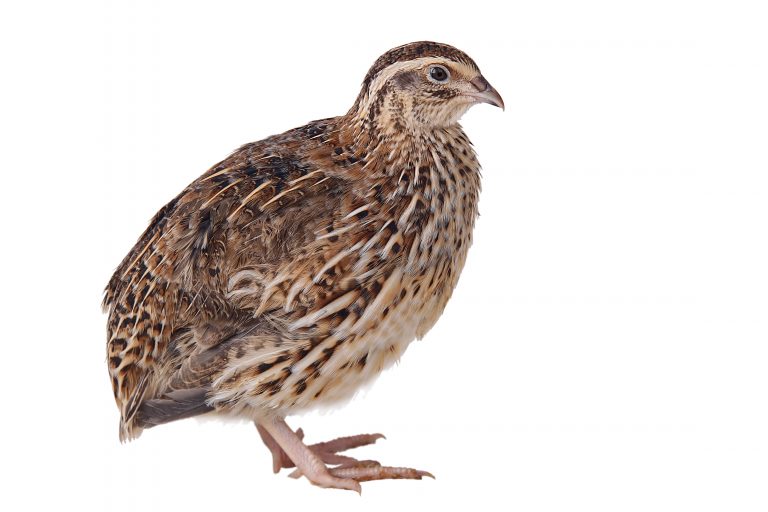Written by: Dr. Jacquie Jacob, University of Kentucky and Dr. Brigid McCrea, Delaware State University

Japanese quail, like chickens and ducks, have been selectively bred for either meat or egg production. There is a niche market for specialty products such as fresh or pickled quail eggs and fresh or frozen quail. Because markets for quail are location-specific, anyone interested in raising quail as a commercial venture should thoroughly explore the local market before investing.
Japanese quail mature in about six weeks and are able to produce eggs by seven weeks. They will continue to produce eggs economically for at least a year. Japanese quail eggs are a mottled brown. Shell pattern and color are specific to each hen. The average egg weighs about 10 grams—roughly 8% of the body weight of a quail. Although quail eggs are smaller than chicken eggs—it takes about five quail eggs to equal one chicken egg—they are used for many of the same purposes. The shell of a quail egg is thicker than that of a chicken egg and harder to crack. In addition, the shells of quail eggs tend to adhere to the whites when the eggs are boiled, making the eggs very difficult to peel. (To remove the shell of a hard-cooked egg, roll the egg to fragment the shell.)
The adult female quail has light tan feathers on the throat and upper breast, with black stippling on the breast. The male quail has rusty brown throat and breast feathering. The sexually mature male has a cloacal gland that appears as a bulbous structure located at the upper edge of the vent and secretes a white foamy substance. The gland empties during mating and defecation. The foam is transferred to the female during mating and is suspected to play a role in sperm motility.
Male Japanese quail typically weigh 100 to 140 grams. The females are slightly heavier at 120 to 160 grams Jumbo Japanese quail are 250 to 300 grams. Jumbo quail have been selected for rapid growth and feed efficiency.
Quail are fairly disease resistant. Whether you hatch your own chicks or purchase day-old chicks, you will need a brooding area. The first few weeks are critical for chicks to get off to a good start. The chicks should be placed in a warm area that has feed and water readily available. Young quail can fit through very small spaces, and this propensity for escape needs to be taken into consideration when designing the brooding area. Young quail also have a tendency to drown in shallow water. To prevent drowning, put a screen over the waterers or place small marbles in the water trays for the first week or two. When startled, chicks crowd on top of one another, smothering those on the bottom. Make sure all the corners of the brooding area are rounded to keep the chicks from piling on one another. Use brooder guards for the first week or two. The guards should be removed once the chicks begin to fly so that the chicks do not get stranded on the wrong side of the guard.
When Japanese quail are raised for egg production, they are typically housed in cages. When kept in community pens, quail will not build nests; instead, they hide their eggs in the litter. Keeping the quail in cages makes eggs cleaner and easier to collect. Japanese quail require 14 to 18 hours of light per day to maintain egg production. Males not kept for breeding, and any quail raised for meat, should receive only eight hours of light exposure per day. This amount of light is not enough to initiate sexual maturity, which prompts quail to waste energy fighting and mating. Quail will fatten quicker with the reduced hours of light.
FOR MORE INFORMATION
Raising Japanese quail. Maurice Randall and Gerry Bolla, NSW Australia.

